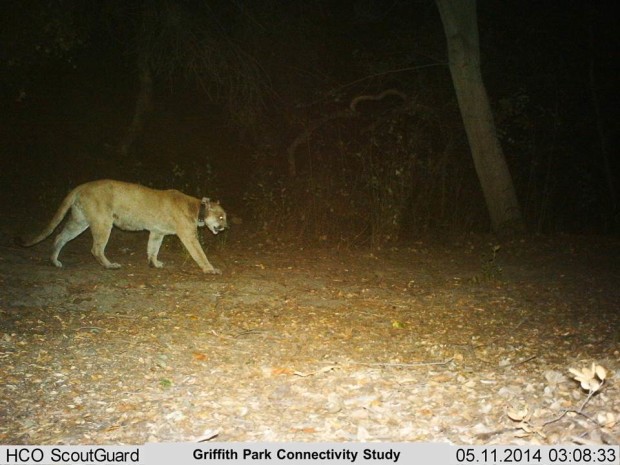We have much more to do and your continued support is needed now more than ever.
Los Angeles Mountain Lion Survives Freeways, Now Threatened by Poison Exposure
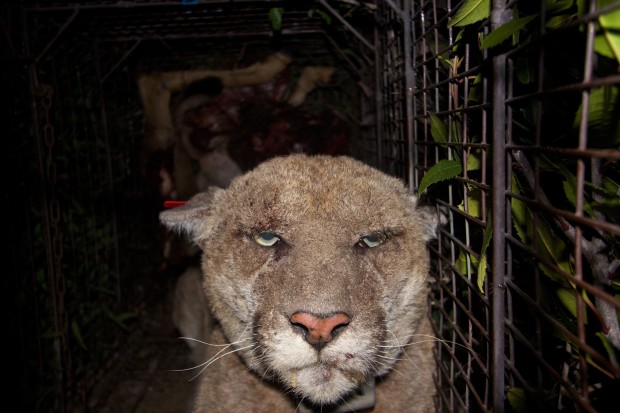
He journeyed through the second largest city in America in search of a home, crossing two of the busiest freeways—the 405 and the 101–in the country. Despite the average home range of a cougar being roughly 250 square miles, he makes do with only eight in a park surrounded on all sides by the city of Los Angeles. And even though his small territory of Griffith Park is visited by ten million people annually, he has remained largely out of sight.
Truly, it’s something to celebrate that the city that gave us Carmageddon also has allowed a mountain lion to thrive—until now.
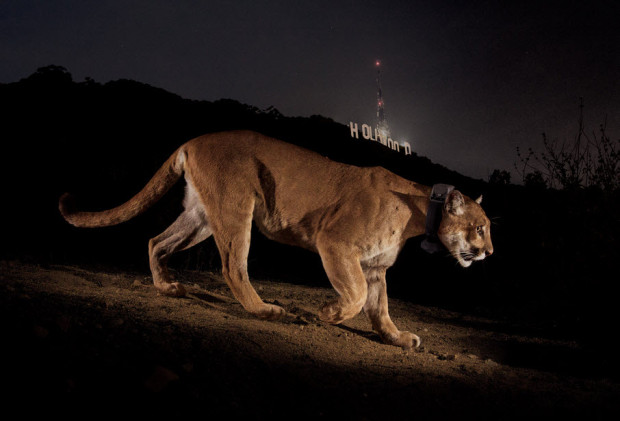
I’ve been enthralled by this cat and his ability to survive in an urban setting since I first read about his arrival in Griffith Park in February of 2012. His plight—and the plight of all urban wildlife in the Los Angeles area—inspired me so greatly that I became involved in helping to support the research of the scientists on the Santa Monica Mountain Lion Study through my work with the National Wildlife Federation.
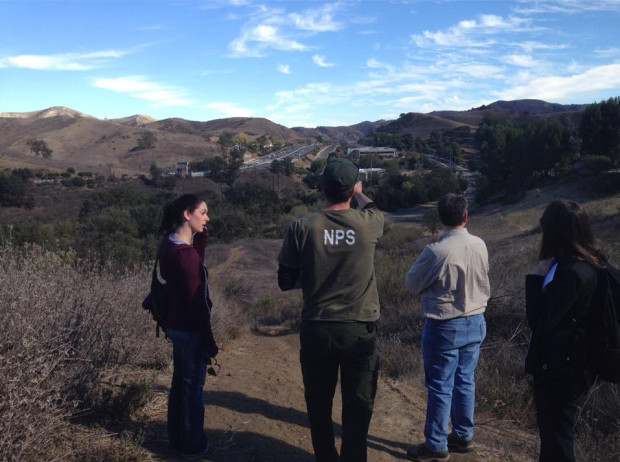
And until now, he has remained relatively safe, and perhaps more importantly, has given no indication he poses a threat to human safety as well. He spends the majority of his time in the natural and more remote areas of Griffith Park, dines predominately on mule deer, and lives up to his species nickname of “ghost cat” for being seldom seen.
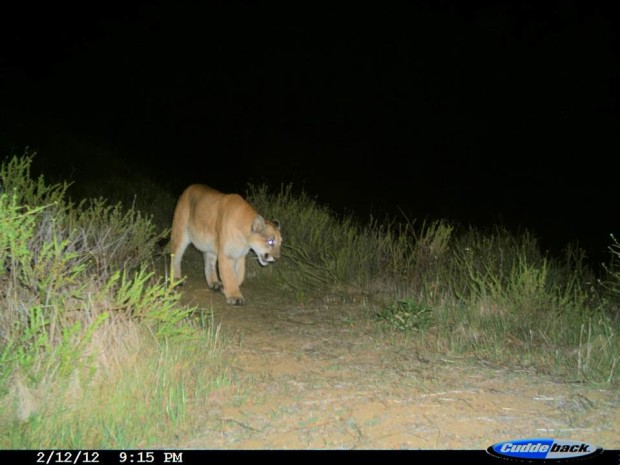
Test results received last week confirm that P-22 has been exposed to anti-coagulant rodenticide, commonly known as rat poison, and is suffering from mange. The National Park Service (NPS) study has previously documented two mountain lion deaths as a result of rodenticide poisoning.
“Anti-coagulant rodenticides are designed to kill rodents by thinning the blood and preventing clotting,” said Dr. Seth Riley, an urban wildlife expert at Santa Monica Mountains National Recreation Area. “When people put these bait traps outside their homes or businesses, they may not realize that the poison works its way up the food chain, becoming more lethal as the dose accumulates in larger animals.”
Tests conducted by the California Animal Health and Food Safety Lab at UC Davis showed diphacinone and chlorophacinone in P-22’s blood, two first-generation anti-coagulant compounds. Recent legislation banned the retail sale of second-generation anti-coagulant rodenticides as of July 1, but does not impact the sale of diphacinone or chlorophacinone.
During nearly two decades of research in and around the Santa Monica Mountains, NPS scientists, working with UCLA graduate student Laurel Serieys, have documented widespread exposure to common household poisons in carnivores, sometimes leading to death. Of 140 bobcats, coyotes and mountain lions evaluated, 88% tested positive for one or more anti-coagulant compounds.

P-22 was captured in late March in order to replace the battery in his GPS collar. Noting his mangy appearance, biologists treated him with selamectin, a topical treatment for ectoparasitic diseases such as mange, fleas and ticks. Biologists hope the treatment is successful, but it remains unclear whether P-22 will fully recover.
After following P22’s adventures since the beginning, after joining in the effort to advocate for building a wildlife crossing for P22 and his kin, receiving this news of his exposure to poison came as a tragic blow. Just last month, I tracked P22 in Griffith Park with the amazing NPS researchers Seth Riley and Jeff Sikich, and stood within shouting distance of P22. I’ve lived and worked in Yellowstone and Yosemite, encountered wolves , bears, and bison in the wild, but standing on a hillside knowing P22 rested and listened as we talked nearby ranks as one of the best wildlife experiences of my life.
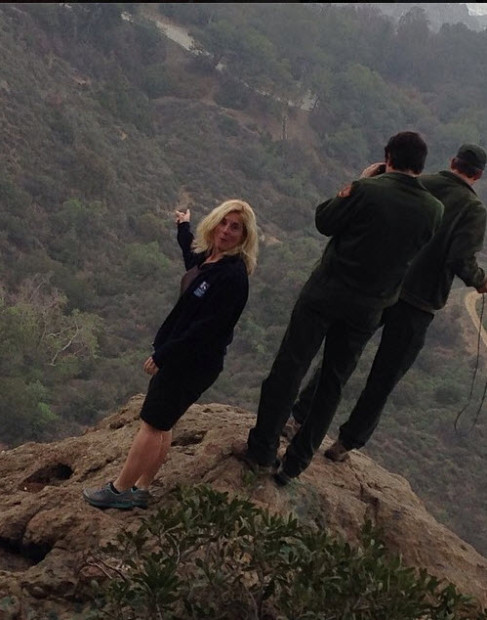
Los Angeles—and the rest of the world—now needs to prove to P22 his journey wasn’t for naught. Let’s give him—and all his Santa Monica Mountain kin—a Hollywood ending. He deserves as much.
UPDATE, MAY 22, 2014:
Some new photos and video footage of P22 show that the treatments the scientists gave him for mange and poison exposure may be working. I asked Jeff Sikich today about his condition, “It appears that he has gained some weight since his last capture. It is difficult to tell for sure from the photos but it seems that his face may look better but his tail is still thin. He continues to move around all the natural areas of GP and killing and eating his natural prey- mule deer.”
Our thanks to Griffith Park Connectivity Study and Miguel Ordeñana for the recent photo of P22 below.
Help NWF Help Mountain Lions
National Wildlife Federation’s new partnership campaign with the Santa Monica Mountain Fund strives to ensure that mountain lions have a future in the Santa Monica Mountains, in part by helping to support vital research and by working to create a wildlife crossing at the 101 Freeway. NWF is proud to support this particular campaign and, more generally, to educate Californians and Americans everywhere about ways in which we can successfully co-exist with and even help wildlife prosper in an increasingly urbanized landscape.
 Please consider donating to support this campaign and our important conservation work in California >>
Please consider donating to support this campaign and our important conservation work in California >>
Know the Risk: Rat Poison and Wildlife
As the National Park Service infographic states below, “National Park Service researchers have found a direct link between exposure to anticoagulant rodenticides, commonly known as rat poison, and the deaths of wildlife in and around the Santa Monica Mountains.”
Click the image to view larger.


